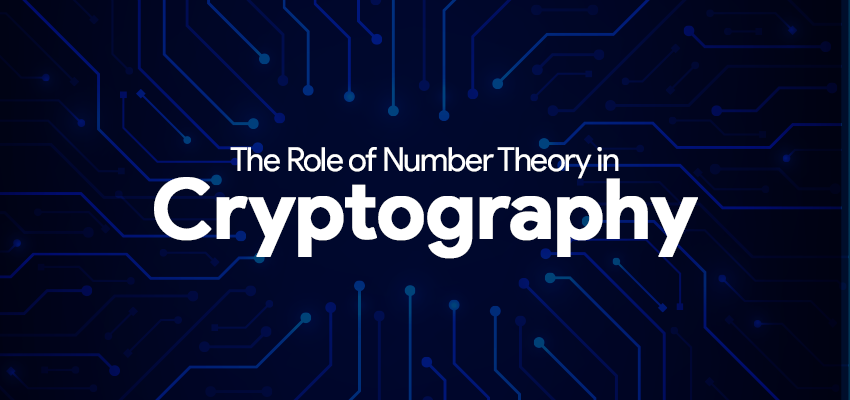Number theory, a branch of pure mathematics, encompasses the study of integers and their relationships. It reveals profound properties that extend beyond basic arithmetic, captivating the attention of mathematicians and cryptographers alike. At the intersection of mathematics and information security lies cryptography, the science of encoding and deciphering secret messages. This article delves into the vital role of number theory in cryptography, illuminating its mathematical foundations and showcasing its significance in safeguarding our digital communications.
Cryptography relies on algorithms designed to encode plaintext—readable information—into ciphertext, which appears nonsensical unless it is decoded. The strength of these algorithms often hinges on properties of numbers, particularly large prime numbers. Through the lens of number theory, we can scrutinize why certain numbers hold immense power in the world of cryptographic systems, notably in securing communications over potentially insecure channels.
Primality: The Building Block of Security
A primary facet of number theory involved in cryptography is primality. A prime number, defined as a number greater than one that has no positive divisors other than one and itself, is foundational to many cryptographic schemes. The most notable application is found in the RSA (Rivest–Shamir–Adleman) algorithm, one of the first public-key cryptographic systems. It capitalizes on two large prime numbers, p and q, which are multiplied together to create a modulus, n. The security of RSA is predicated on the computational difficulty of factoring this large composite number back into its constituent primes.
The fascination with primes arises not only from their rarity as numbers grow larger, but also from the enigma surrounding their distribution. The Prime Number Theorem offers insight into the asymptotic distribution of primes, showing that the density of primes decreases relatively as integers increase. Yet, despite their diminishing frequency, primes remain indispensable. The sheer challenge of discovering and verifying large primes ensures that they serve as formidable safeguards against adversarial attempts at decryption.
Modular Arithmetic: The Language of Encryption
Another indispensable tool derived from number theory is modular arithmetic. This mathematical framework facilitates operations where numbers “wrap around” after reaching a certain value, known as the modulus. Cryptographic protocols often deploy modular arithmetic to create complex encryption algorithms.
For instance, in RSA, the encryption and decryption processes are executed via modular exponentiation, a computationally intensive operation that raises a number to a power and then takes the modulus. The operation efficiently leverages properties of congruences; it assures that anyone lacking knowledge of the private keys cannot feasibly reverse engineer the operations. The reliance on modular arithmetic exemplifies how theoretical constructs translate into practical applications that underpin the security of our communications.
Elliptic Curves: An Elegant Alternative
As the complexity of demands increased, cryptography continued to evolve. Enter elliptic curve cryptography (ECC), which operates on the algebraic structure of elliptic curves over finite fields. ECC offers an intriguing alternative to traditional methods involving large integers. The complexity of computations in ECC provides equivalent security with much smaller key sizes, thus enhancing efficiency.
The allure of elliptic curves lies in their geometric properties, as they reside on a two-dimensional plane defined by an equation. Remarkably, the arithmetic defined on these curves follows the principles of number theory, allowing for the generation of points that enable secure encryption. By exploiting the hard problem of the elliptic curve discrete logarithm, ECC establishes a robust framework resistant to contemporary attacks, making it a preferred choice for modern cryptographic applications.
The Role of Theoretical Research in Practical Security
While the mathematical underpinnings of cryptography may seem esoteric, ongoing theoretical research remains intrinsically linked to practical security. Cryptographers delve deep into the principles of number theory, investigating the relationships between various classes of numbers to improve existing algorithms. Research leads to better understanding and identification of vulnerabilities, paving the way for the formulation of more robust systems.
Moreover, recent advancements in quantum computing pose new challenges for traditional cryptographic schemes. Quantum algorithms, such as Shor’s algorithm, threaten to dismantle RSA’s security structure by effectively factoring large numbers. As a response, post-quantum cryptography is emerging, exploring new number-theoretic bases that remain secure under quantum computations, reflecting the adaptive nature of cryptographic practices derived from mathematical rigor.
The Interconnection of Mathematics and Humanity
The magnetic draw toward number theory and its application in cryptography finds root in a blend of mathematical intrigue and societal impact. The essence of cryptography lies not only in the pursuit of perfect encryption, but also in the fervent necessity to protect privacy and maintain trust in an increasingly digital world. As systems of communication evolve, so too does the demand for rigorous mathematical frameworks capable of evolving alongside technological advancements.
As we dissect the integral role of number theory in cryptography, it becomes evident that the fascination with numbers is not merely aesthetic. Each prime, each modulus, and each curve has a story; they speak to the broader narrative of human communication and the value assigned to privacy and security. Ultimately, number theory serves as the unsung hero of cryptography, anchoring the art of secure communication in a bedrock of mathematical truth.








Leave a Comment